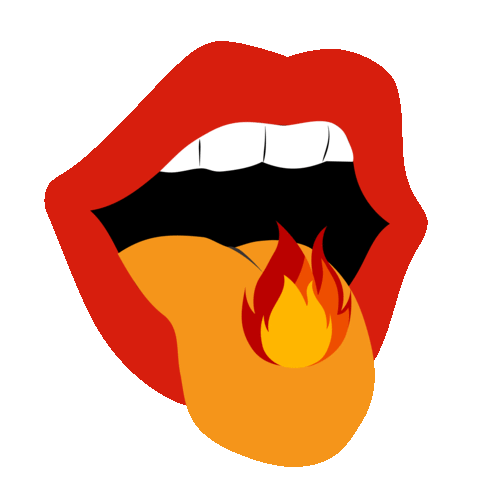Burning Tongue Syndrome: Is Your Body Trying to Tell You Something Deeper?
- Khristina Maureen

- Sep 13
- 3 min read
Updated: Sep 21

Ever feel like your tongue is on fire, no hot coffee involved?
Maybe you’ve avoided acidic foods and switched toothpastes, but it still comes back.
Or perhaps you’ve noticed tiny cracks, bumps, or even split grooves across your tongue and cracked corners of your lips.
You might be dealing with burning tongue syndrome (burning mouth syndrome), but that’s just the surface. This is your body waving a flag that something deeper might be going on.
What Burning Tongue Syndrome Looks Like
Common symptoms include:
Burning or tingling sensation in the tongue, lips, gums, or palate
Cracks or fissures down the tongue
Tiny red or white bumps
Cracks at the lip corners
Metallic taste or dry mouth
And while your provider might give a rinse or antifungal, those are often short-term solutions. Functional nutrition asks the bigger question: why is this happening?
Root-Cause Clues Worth Exploring
1. Check Nutrient Status
Low B12, folate, B6, iron, or zinc levels can cause burning, smooth tongues, or cracks at the
lip corners (Source).
Ask your doctor: Can we run a full nutrient panel, not just basic blood counts?
2. Consider Gut Health
Low stomach acid, yeast overgrowth, or gut imbalance can appear as tongue changes.
Do you have bloating, reflux, or constipation?
Do you feel better—or worse—after protein-heavy meals?
3. Look at Hormones and Stress
Hormone shifts (perimenopause, thyroid issues) and chronic stress can change saliva pH and nerve sensitivity (Source).
Has your cycle, mood, or sleep changed?
When was your thyroid last checked?
4. Notice Patterns
Cracks at the lip corners (angular cheilitis) or recurring flare-ups can point to underlying fungal or bacterial overgrowth, which is worth investigating instead of just applying more ointment.
Why This Matters
Google can give you lists of remedies, but can’t connect your unique dots—nutrients, gut, hormones, and lifestyle. Burning tongue syndrome is rarely “just one thing.” It’s often a combination that needs a whole-body approach.
Your Next Right Step
See your doctor: Ask for labs (nutrients, thyroid, iron, blood sugar).
Track symptoms: Log meals, stress, and flares. This is where patterns reveal themselves.
Dig deeper with support: If you’ve tried quick fixes and the problem keeps returning, 1:1 functional nutrition coaching can help you connect the dots and create a personalized plan.
You deserve more than symptom-chasing. You deserve clarity and a plan that makes sense for your body.
Real Talk & Final Bite
Burning tongue syndrome can be frustrating, but it’s often your body’s way of saying something deeper needs attention, whether nutrients, hormones, digestion, or stress.

By asking the right questions and exploring root causes, you can work with your healthcare provider to get closer to real answers.
—Khristina Maureen,
Your Functional Nutrition Ally
Ready to Go Beyond Quick Fixes?
If you’ve tried avoiding foods, switching products, or using rinses, and the burning still comes back, your body might be asking for a bigger-picture solution.
In my 1:1 Functional Nutrition Sessions, we:
✔ Map your health story and symptoms
✔ Look for patterns in nutrients, gut health, and hormones
✔ Build a plan that fits your season of life (not a generic protocol)
You don’t have to figure this out alone.
Book Your Discovery Call to see if root-cause coaching is your next step.




Comments